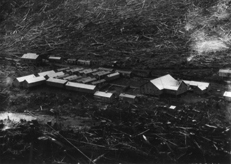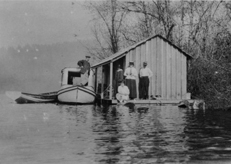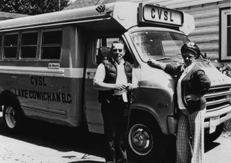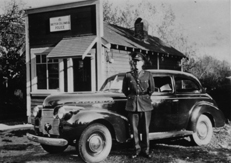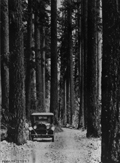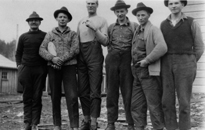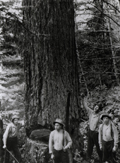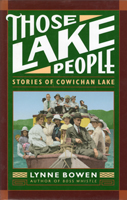 |
Those Lake PeopleStories of Cowichan Lake (1995)(2019) |
Twenty-six miles of fresh water teeming with fish and surrounded by old-growth forest: this was Cowichan Lake at the end of the nineteenth century. Home to trappers, hunters and a handful of remittance men, the lake was also the favourite holiday destination for dukes and duchesses, Hollywood actresses and New York tycoons. Soon the giant trees began to fall to the crosscut saws of immigrant loggers from Finland, Norway, Sweden, India, Japan and China. As technology advanced in the logging industry and the woods became a killing ground for loggers, the camps around the lake became the testing ground for union organizers whose clandestine activities contrasted remarkably with those of rhododendron and alpine flower growers who have left their mark on gardens throughout the Pacific Northwest. |
|
M and M camp, later known as Rounds, where blacklisted loggers could find work. |
One of several floathouses on Cowichan Lake before World War One. |
|---|
|
Ivor and Alice " The Green Hornet" Pederson, taxi and bus drivers c. 1965 in |
Constable Smokey Parsley stands in front of the Lake Cowichan police station in the 1940s before the explosion destroyed it. |
|---|
|
Tall timbers on the road to Cowichan Lake. |
Swedish and Finnish loggers pose in Cowichan Lake logging camp in 1926. Kaatza Station Museum |
Cowichan Lake loggers prepare to fell a tree before power saws and hard hats changed logging in the 1940s. Kaatza Station Museum |
|---|
Those Lake People can be found at:
Kaatza Station Museum in Lake Cowichan, B.C.
Volume One Book Store in Duncan
Major libraries or through inter-library loan.
A second-hand copy can be purchased through AbeBooks or Amazon.ca






